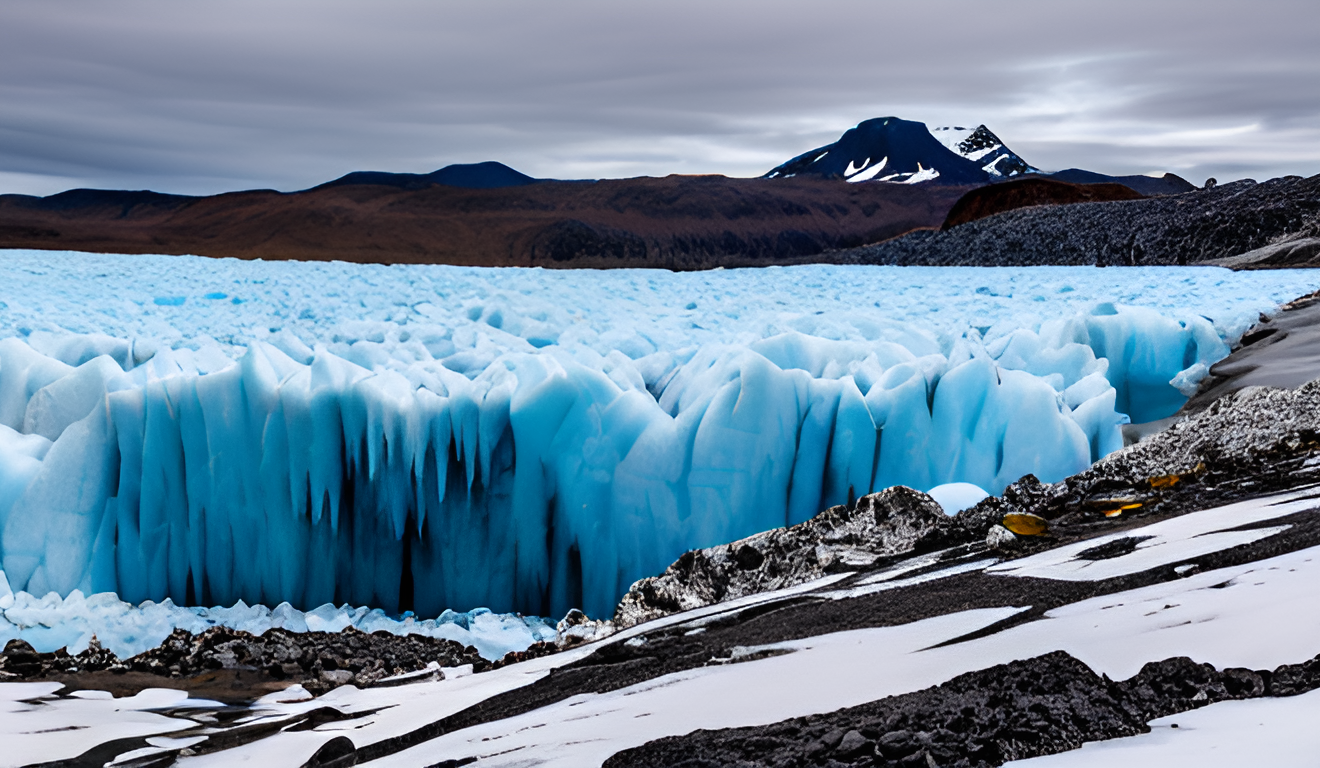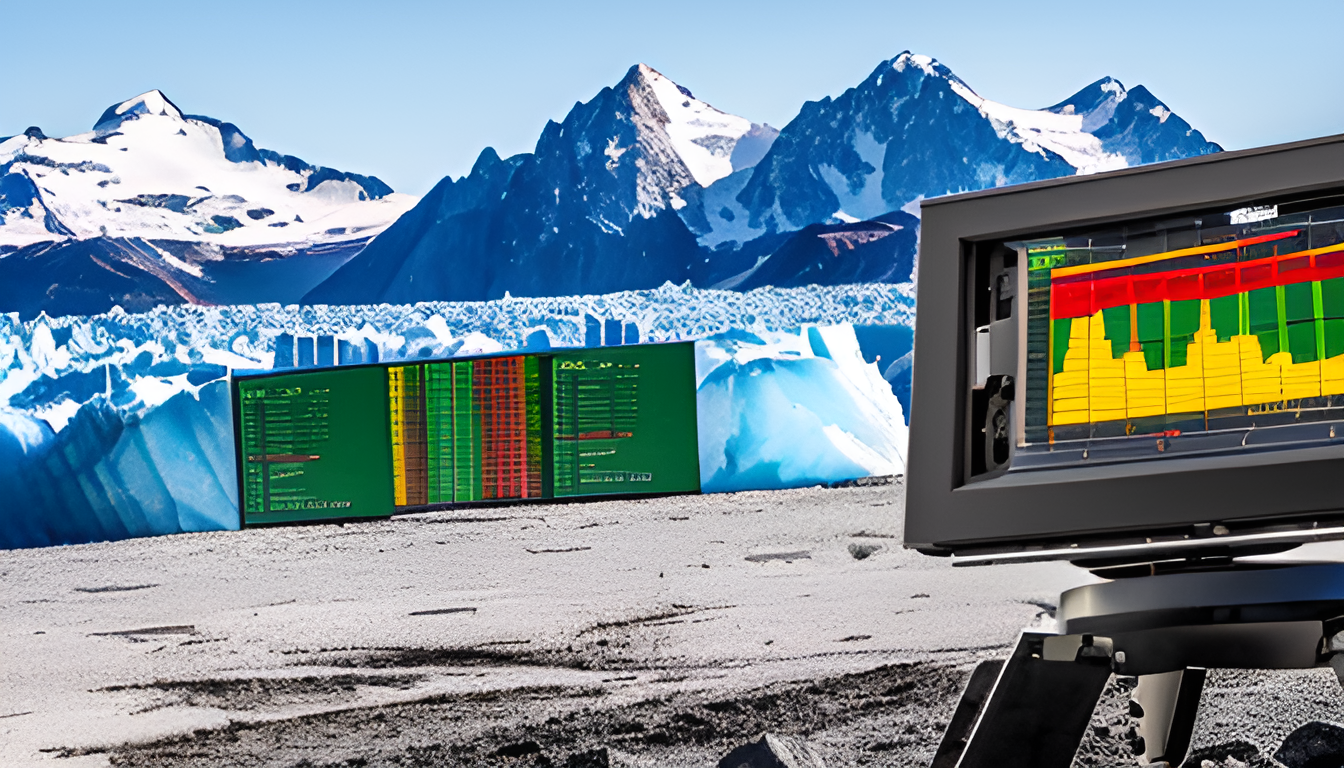Scientists Detect Nine-Day Seismic Signal from Greenland Glacier Collapse

The recent detection of a prolonged seismic signal associated with a glacier collapse in Greenland has sent ripples through the scientific community. Imagine a giant ice giant, silently drifting for centuries, suddenly shattering into a cacophony of vibrations that echo through the Earth for days. This seismic event, lasting an astonishing nine days, is not just a natural phenomenon; it’s a wake-up call for climate scientists worldwide. As glaciers melt and collapse, they reveal critical insights into our planet’s changing climate.
Seismic signals are essentially the vibrations that travel through the Earth, often triggered by geological events like earthquakes or, in this case, glacier movements. When a glacier collapses, it generates a series of vibrations that can be detected by advanced monitoring systems. These signals are crucial for understanding how glaciers behave and how they respond to climate change. The ability to capture these signals provides scientists with a window into the dynamics of glacial movements, helping them piece together the puzzle of our planet’s climatic shifts.
The glacier collapse in Greenland is a stark reminder of the rapid changes occurring in our environment. Factors such as rising temperatures, increased rainfall, and ocean warming are contributing to the instability of these massive ice formations. The implications of this collapse are significant, potentially leading to rising sea levels that threaten coastal communities around the globe. Scientists are deeply concerned about how these changes will affect global climate patterns, making this event a critical area of study.
Thanks to advancements in seismic monitoring technology, scientists can now detect even the most subtle changes in the Earth’s crust. Instruments such as seismographs and GPS sensors play a vital role in capturing these seismic signals. The nine-day signal from the Greenland glacier collapse was recorded using a network of these sophisticated tools, allowing researchers to analyze the data in unprecedented detail. This technological leap not only enhances our understanding of glacier dynamics but also equips scientists to better predict future events.
The detection of seismic signals from glacier collapses offers invaluable insights into the ongoing battle against climate change. By analyzing these signals, researchers can refine their climate models and improve predictions related to glacial movement and melting rates. This information is essential for developing effective strategies to mitigate the impacts of climate change, ensuring that we remain one step ahead in protecting our planet.
Understanding Seismic Signals
Seismic signals are essentially the heartbeat of the Earth, a series of vibrations that travel through the planet’s crust. These vibrations can be triggered by various geological events, such as earthquakes, volcanic eruptions, and, as we’ve recently discovered, the dramatic collapse of glaciers. But what exactly are these signals, and why are they so crucial for scientists?
When a glacier shifts or collapses, it creates a sudden release of energy that generates seismic waves. Think of it like a giant rock being dropped into a still pond; the ripples that spread out represent the seismic waves. These waves can travel great distances, providing researchers with valuable data about the event’s magnitude and impact. By analyzing these signals, scientists can piece together a narrative about the glacier’s movements and understand the underlying geological processes.
Detecting seismic signals is more than just an academic exercise; it has real-world implications. For instance, understanding how glaciers behave can help predict their future movements and the potential rise in sea levels. As glaciers melt at an alarming rate due to climate change, monitoring seismic activity becomes increasingly important. Here are a few key reasons why:
- Real-time data: Seismic signals provide immediate insights into glacial dynamics.
- Predictive modeling: They help scientists forecast future glacier behavior and its impact on climate.
- Global significance: Understanding these signals contributes to broader climate change research.
In summary, seismic signals are not just a fascinating aspect of geology; they are a crucial tool for understanding the Earth’s changing climate. By honing in on these vibrations, scientists can unlock secrets about our planet’s past and present, guiding us toward a more informed future.
The Greenland Glacier Collapse
The recent collapse of a glacier in Greenland has sent shockwaves through the scientific community, raising serious concerns about the accelerating effects of climate change. Imagine a massive wall of ice, towering and majestic, suddenly giving way to the forces of nature. This event wasn’t just a local disturbance; it reverberated across the globe, emphasizing the fragility of our planet’s climate systems. But what led to this dramatic collapse?
Several factors played a role in this catastrophic event. The primary culprit is the rising global temperatures, which have been steadily increasing due to human activities. As the planet warms, glaciers are melting at an alarming rate, leading to instability. Additionally, the interplay of ocean currents and atmospheric conditions has been exacerbating the situation, creating a perfect storm for glacial collapse. The Greenland glacier, in particular, has been under immense pressure from warmer ocean waters eroding its base, further compromising its structural integrity.
Scientists are particularly concerned about the implications of this collapse. The melting of Greenland’s glaciers contributes significantly to rising sea levels, which could threaten coastal communities worldwide. In fact, projections suggest that if the current trends continue, we could see a rise of up to three feet by the end of the century, displacing millions. The urgency to understand these events has never been greater, as they are not isolated incidents but part of a larger, alarming pattern.
In summary, the Greenland glacier collapse serves as a stark reminder of the impacts of climate change. It’s a wake-up call for all of us, highlighting the need for immediate action to mitigate these effects. As we continue to monitor these changes, the lessons learned from this event will be crucial in shaping our responses to the ongoing climate crisis.

Technological Advances in Monitoring
The world of seismic monitoring has undergone a remarkable transformation in recent years, thanks to cutting-edge technology that allows scientists to detect even the faintest vibrations from events like the Greenland glacier collapse. Imagine being able to hear whispers from deep within the Earth—this is what modern seismic sensors achieve! These devices are designed to capture a wide range of frequencies, making it possible to analyze seismic signals that last for extended periods, such as the nine-day signal linked to the glacier’s disintegration.
One of the most significant advancements in this field is the use of high-sensitivity seismometers that can pick up subtle changes in ground movement. These instruments are like the ears of the Earth, tuned to detect the slightest shifts caused by glacial movements. Additionally, the integration of machine learning algorithms has revolutionized data analysis. By processing vast amounts of seismic data, these algorithms can identify patterns and anomalies that human analysts might miss. This capability not only enhances our understanding of seismic events but also improves our ability to predict future occurrences.
Furthermore, the deployment of remote sensing technologies, such as satellite imagery and aerial surveys, complements seismic monitoring. This combination allows scientists to visualize the glacier’s physical changes over time, offering a comprehensive view of the processes at play. For instance, researchers can observe how melting ice contributes to increased seismic activity, providing critical data for climate models.
In summary, the fusion of advanced seismic sensors, machine learning, and remote sensing is paving the way for a deeper understanding of glacial dynamics. As we continue to refine these technologies, our ability to monitor and respond to climate change will only improve, giving us hope in the face of an ever-evolving environmental challenge.
Implications for Climate Research
The recent detection of a nine-day seismic signal from the collapse of a glacier in Greenland has opened a new chapter in climate research. This remarkable finding not only highlights the fragility of glacial systems but also emphasizes the urgent need for understanding their dynamics in the context of climate change. Scientists are now able to link seismic activity directly to glacial movements, providing a window into the processes that govern these massive ice structures.
By analyzing these seismic signals, researchers can gain insights into how glaciers respond to warming temperatures. For instance, the data collected can reveal patterns of ice flow and fracture, which are crucial for predicting future glacier behavior. This is particularly important as melting glaciers contribute to rising sea levels, posing a significant threat to coastal communities worldwide.
Furthermore, the implications of this discovery extend beyond just local effects. The information gleaned from such seismic monitoring can inform global climate models, helping scientists to refine their predictions about future climate scenarios. To illustrate this point:
- Enhanced Predictive Models: Improved data allows for more accurate simulations of climate impacts.
- Informed Policy Decisions: Understanding glacier dynamics aids in creating effective climate policies.
- Public Awareness: Highlighting the connection between seismic signals and climate change can raise awareness among the general public.
In conclusion, the implications of detecting seismic signals from glacier collapses are profound. They serve as a crucial reminder of the interconnectedness of our planet’s systems and the urgent need for continued research in the face of a changing climate. As we delve deeper into this field, we can only hope that such advancements will lead to actionable solutions that mitigate the impacts of climate change on our world.













